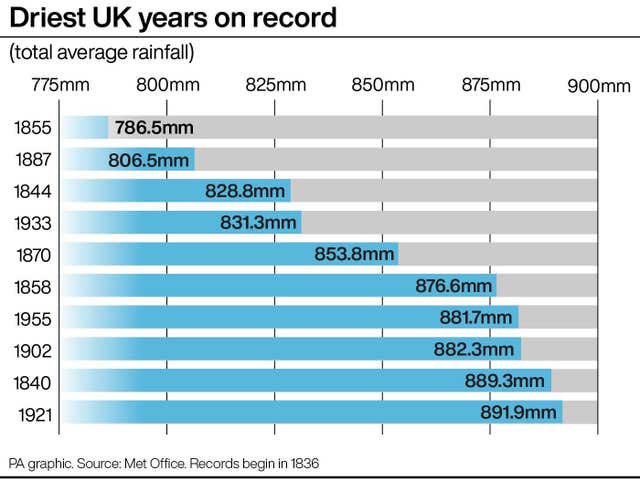
Millions of archived rainfall records dating back nearly 200 years which were digitised by volunteers during the pandemic have broken UK weather records and provided researchers with decades more data on weather trends.
The University of Reading’s Rainfall Rescue project involved the transcription of 130 years worth of handwritten rainfall records – more than five million individual observations – across the UK and Ireland.
The results revealed the UK’s driest ever year on record is 1855, the third wettest month is December 1852 in Cumbria, and November of the same year the wettest month on record for many parts of southern England.
But the project produced more than just new records. According to Catherine Ross, an archivist at the Met Office, it has “broken the definition of an archive”.

“In its lifecycle a document moves from being a record, in everyday use, to an archive where it is kept as part of a memory – in our case the National Memory of the Weather,” Ms Ross said.
“However, this project’s 66,000 formerly inanimate sheets of numbers have been given a new life by placing data that can be interrogated and compared into the hands of scientists at the Met Office and around the world.”
Around 16,000 volunteers contributed to transcriptions, the results of which have now been made publicly available in the official Met Office national record and have extended it back 26 years to 1836.
It has also increased the amount of pre-1960 observation data available for climate scientists and researchers by six-fold.

Professor Ed Hawkins, project lead and climate scientist at the University of Reading, said he was “blown away” by the effort of volunteers who signed up to the projects during the UK’s first Covid-19 lockdown.
“Thanks to the hard work of the volunteers, we now have detailed accounts of the amount of rain that fell, back to 1836, as seen through the eyes of other dedicated volunteers from several generations ago,” he said.
“To put that in context, 1836 was the year Charles Darwin returned to the UK on the Beagle with Vice-Admiral Robert Fitzroy, and a year before Queen Victoria took to the throne.
“As well as being a fascinating glimpse into the past, the new data allows a longer and more detailed picture of variations in monthly rainfall, which will aid new scientific research two centuries on.
“It increases our understanding of weather extremes and flood risk across the UK and Ireland, and helps us better understand the long-term trends towards the dramatic changes we’re seeing today.”

Paper records studied by Rainfall Rescue volunteers contained observations between 1677 and 1960, based on rain gauges located in almost every town and village across England and Wales.
The number of rain gauges contributing data to the national record for the year 1862 increased from 19 to more than 700 due to the digitisation.
One gauge included in the transcription was located next to Beatrix Potter’s Hill Top farm in the Lake District, where she wrote many of her most famous books.
Jacqui Huntley, a project volunteer based near Stanraer in Scotland, said she got involved in Rainfall Rescue because she is a “fanatic about the weather, especially rain”.
She said: “And it rains a lot where I live in Scotland. The data are obviously valuable to scientists, but I have also loved learning about the rainfall observers who were so dedicated in measuring the weather day after day.
“It has been fun, and a true team effort, from start to finish.”


Comments: Our rules
We want our comments to be a lively and valuable part of our community - a place where readers can debate and engage with the most important local issues. The ability to comment on our stories is a privilege, not a right, however, and that privilege may be withdrawn if it is abused or misused.
Please report any comments that break our rules.
Read the rules here